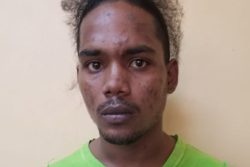As an event or a tale acquires folklore status distortions are liable to occur as it passes from generation to generation. Several variations might emerge, as bits are added to, and, or, omitted from the original account. West Indies cricket folklore stories gravitate to explosive innings such as Roy Fredericks’ 169 in the Second Test match at Perth versus Australia in the 1975/76 series, and Viv Richards’ 291 in the Fifth Test at the Oval, in England, in 1976. They also include outstanding bowling performances, like Sonny Ramadhin and Alf Valentine spinning the West Indies to a famous victory in England during the Second Test at Lord’s in 1950, which was immortalised in “Victory Calypso.” Final overs of thrilling finishes are also in the folklore collection. The last over of the Tied Test Match at Brisbane in the 1960/61 series in Australia, and Carlos Brathwaite swotting four consecutive sixes to win the 2016 T20 World Cup Final spring to mind. And then, there is the over Michael Holding delivered to Geoffrey Boycott.

The Robin Jackman Affair
England’s 1981 Tour of the Caribbean commenced with an embarrassing defeat by an innings and 79 runs in the First Test at the Queen’s Park Oval in Trinidad; they failed to pass 200 in either innings. The tour then shifted to Guyana for the Second One Day International (ODI) and the Second Test. The territorial match against Guyana, slated for 21st to 24th February, was abandoned without a ball bowled as rain pounded the Bourda sward. Meanwhile, Surrey veteran Robin Jackman, who had been selected as a standby, received a telephone call on 23rd February summoning him to join the tour as a replacement for the injured Bob Willis.
When Ed Barnes, a sportscaster with Radio Jamaica, raised the issue of Jackman playing and coaching in South Africa and Rhodesia in the previous 11 seasons, all hell broke loose. The Guyana government revoked Jackman’s visa. The rest of the tour hung in the balance, as the Second Test scheduled for 28th February to 5th March at Bourda was cancelled (In Search of West Indies Cricket – The Test that never was – SN 5th & 12th June, 2016). The England team departed for Barbados on Friday, 27th February, a day after losing the Second ODI by six wickets at Albion.
After a meeting of the governments of Antigua, Barbados, Jamaica and Montserrat – the destination points for the rest of the tour – it was announced on Wednesday, 4th March that the tour would resume. The English side, after sitting idly for a few days whilst the negotiations took place, beat Barbados by 11 runs in a 50 Overs game on 6th March, before drawing the four-day territorial match against a strong Barbados XI, on 7th – 10th March.
The Third Test began on Friday, 13th March – exactly one month after the First Test had begun – at the famous Kensington Oval in Bridgetown. On winning the toss, England Captain Ian Botham invited the hosts to have the first knock. At lunch, the West Indies had been reduced to 72 for four, with Test debutante Jackman snatching the wickets of the opening pair of Gordon Greenidge and Desmond Haynes. A fifth wicket partnership of 154 between the left-handers, Captain Clive Lloyd, 100, his 14th Test century, and Larry Gomes, 58, erased England’s early advantage, as the home side recovered to 238 for seven by the close of play.
On Saturday morning, Skipper Botham, with the second new ball at his disposal, quickly wrapped up the hosts’ first innings at 265, by capturing the last three wickets within 50 minutes. As on the first day, the Kensington Oval was bursting at the seams. It was estimated that 16,000 spectators, including 2,000 English cricket tourists, were squeezed into the 14,000-capacity ground. Youngsters were perched on the roofs of the stands circling the field and in nearby trees overlooking the pitch, as every nook and cranny was filled. It was the first time that the fabled pace quartet of Andy Roberts, Michael Holding, Colin Croft and Joel Garner were playing in a Test match at Kensington. The buzz of anticipation was electric, as the West Indies prepared to defend their rather modest total, by their (then) standards.
Holding
In the West Indies dressing room in the Pickwick Pavilion, Skipper Lloyd approached Holding and asked him which end he wished to bowl from, subtly indicating that he was going to deliver the opening over. Taken aback by the offer, Holding responded, “Whichever end Andy doesn’t want,” in deference to Roberts, the senior partner in both Test experience and age, who had always bowled the first over. Besides, Holding, who had been encountering problems with his silky smooth run up, which had earned the title of “the Rolls Royce of fast bowlers” , had lost it during the First Test, and it was Roberts, the cerebral fulcrum of the pace quartet, who had sorted out the kink.
Boycott
The 40-year-old Boycott, famed for his technique and temperament, was making his third tour of the Caribbean, in as many decades. No doubt as he padded up, he was probably rehashing his second innings dismissal in the First Test. With England following on, 248 in arrears on first innings, Boycott had anchored the uphill battle, as wickets tumbled at the other end. It took a lightning fast rising bouncer from Holding, with the second new ball, which Boycott instinctively parried from his throat, only for Haynes, at third slip, to dive forward and accept the catch. England was 142 for six, of which Boycott had contributed 70 priceless runs. Twenty-seven runs later, the West Indies had secured their first innings victory over England in the Caribbean since 1935.
A few years later, on an episode of the BBC World Service programme “In the Psychiatrist’s Chair”, Boycott, the master craftsman, discussed his intense ‘night before a Test match’ preparation ritual, which involved visualisation of the opposing bowlers, analysis of their strengths and weaknesses, and working out their likely strategy. Now, as he strode to the wicket with Graham Gooch to face the West Indies’ fearsome attack, he could take stock of his two double centuries on the Kensington pitch: 243 versus Barbados in 1968, and 261 not out against the 1974 President’s XI, which included both Roberts and Holding. He had renewed acquaintances with the duo the previous summer during the West Indies tour of England.
Holding to Boycott
Holding having signalled that he wasn’t about to usurp Roberts’ position, the senior statesman duly opened the attack. Roberts’ first over cost six runs, as Gooch weathered the storm. Then it was Holding’s turn from the northern end with the George Challenor Stand as the backdrop.
In the first chapter of his book, “Whispering Death – The Life and Times of Michael Holding” written with Tony Cozier (1993), titled ‘A quite special over’, Holding recalled Lloyd’s instructions: “I want you to bowl flat out from the start. Don’t worry, I’m only giving you three or four overs, so let’s have all you have got.”
The hard and bouncy Kensington pitch was covered with a layer of grass, a feature which had been the subject of an exchange between Boycott and Tommy Pierce, the Kensington curator, prior to the Test match. Boycott was not too happy with that state of affairs, a point which was duly relayed to Holding during his pregame chat with Pierce. Perfectionists both, neither was apt to leave any element of preparation to chance.
Holding steamed in off his 22-yard run, focusing on an off-stump line, looking for Boycott, an expert judge of line and length, to get an edge whilst nibbling at the outswinger. The first ball was perfectly pitched on line and length, and Boycott, surprised at the bounce, prodded at it hesitantly. It hit him on the glove and dropped just short of Richards at second slip. Lloyd at first, Greenidge at third, and Everton Mattis at fourth completed the slip cordon. Garner at gully and Haynes at forward short leg wrapped up the aggressively set field.
In “Whispering Death” Holding noted after the first delivery, “Everything was right, my rhythm, my delivery stride, my action. It’s rare to feel that way from the very start of a spell …”
The second delivery, at high speed, pitched outside the off stump, and Boycott prodded and missed it. The ball disappeared into the soft hands of David Murray, the hometown boy, who had finally got a chance to don the gloves in a Test match at Kensington.
The third ball was fast and accurate, Boycott was beaten for pace. The ball missed his bat, nipped in and struck him on the thigh. Then in the twilight of his career, Boycott had taken to wearing a helmet, but that hadn’t changed the fundamental approach hammered into him by former Test players, including Maurice Leyland and Bill Bowes, during his early days at Yorkshire nets, “watch the ball.”
The Kensington crowd was buzzing. Something was brewing in that knowledgeable cricketing cauldron. They had borne witness to the three W’s, Garry Sobers in full flight and Lawrence Rowe’s triple century during the previous England visit. The veteran maestro, a tad past his best, was not budging or flinching. Boycott was often accused of being a slow scorer, yet no one ever challenged his courage in the face of adversity. There he was, engaged with the world’s most fearsome pace quartet on their favourite turf, battling their ace speed merchant on full throttle.
The fourth ball was once again fast. It was also short and nasty, causing Boycott to protect his throat. The ball looped and dropped just short of Garner’s large hands. The momentum was building; the tempo swelling around the bastion of Kensington, where the West Indies hadn’t lost a Test since 1935.
The fifth ball was a replica of the fourth. Fast and short. Again Boycott protected his throat, and once again, it dropped just short of Garner. The spectators were loving the confrontation unfolding in front of their eyes. Mano-a-mano. No quarter given, none conceded.
Last ball of the over. The din was incredible. Holding charged in. The delivery was full and fast, and Boycott had no chance. The off stump was cartwheeling 20 yards away before he could lower the bat. Probably anticipating another short ball, he failed to protect the off stump, and played inside the line. Stunned for a second, he looked confused, stared at the broken wicket, before departing. The crowd, equally stunned, paused collectively before erupting in a roar. Bedlam at Kensington. Haynes, fielding at forward short leg did a spontaneous jig, the rest of the West Indies team swarmed towards Holding. All of the spectators were on their feet applauding, even the English supporters acknowledged the moment. Boycott, the lynchpin of the England side, had been removed for a rare duck.
………………………..
The drama of Holding’s over was quickly forgotten as Ken Barrington, the former England Test batsman, and Assistant Tour Manager passed away suddenly from a heart attack later that evening
England were scuttled for 122, with Holding adding the scalps of Botham and David Bairstow in the same over, during his second spell. Richards’ second-innings century, 182 not out, was the cornerstone of a West Indies total of 379 for nine. Despite Gooch’s five-hour epic innings of 116, England succumbed by 298 runs on the fifth morning, after only mustering 224. Holding dismissed Boycott again in his first over of the second innings. This time around with his third ball, which lifted off a length and touched his glove before Garner in the gully accepted the catch; a disappointed Boycott walked off with just one run to his name.
The last two Tests in Antigua and Jamaica, respectively, were drawn, as the West Indies took the series 2-0 , beating England in the Caribbean for the first time since 1948. Boycott scored 104 not out in the second innings of the Antigua Test.
Postscript
Boycott wrote a book about the tour, “In the Fast Lane”, and as expected addressed the subject of the over. “For the first time in my life, I can look at a scoreboard with a duck against my name and not feel a profound sense of failure. For the first time I can remember, I can write off an innings, whatever the history books might say, as being near to irrelevant as any Test innings will be. It might have been a spectacle which sent the West Indians wild with delight, but [it] had damn-all to do with Test cricket as I understand it,” he wrote.
Holding, in his second book, “No Holding Back – The Autobiography” written with Edward Hawkins (2010) addressed the over again in chapter nine, ‘The greatest over’. He said it wasn’t his fastest over, suggesting instead that he bowled a quicker one in the First Test at Perth, Australia during the 1984/85 Tour, during which he dismissed Rick Darling and Greg Chappell. “Apparently that evening Boycott, true to his studious nature, studied a replay of the over to see what he had done wrong. (I don’t know where he found one because there were not television cameras like there are for Tests today and only the local network would have been covering the match). But the story goes that Boycott pored over the footage, analysing where his feet went, whether his head was over the ball. His conclusion that he had done nothing wrong was pleasing to hear,” Holding wrote.
In fact, there was a television camera set up at long on. When the news of the Robin Jackman Affair broke, an English television crew (some sources say BBC, others say ITN) was dispatched to cover the story. Boycott, who spent the rest of the day replaying the sixth ball over and over in his mind, duly found the television crew that night and reviewed the rare footage. The grainy video footage that still exists today is the spin off from the original story. The footage only covers the first, second and sixth balls of the over. To date, it has garnered over a million views on YouTube. (Another version exists online with footage of all six deliveries.)
That over later took on a life of its own. It transcended West Indies cricket folklore. It is often referred to as one of the greatest overs ever bowled in Test cricket. It was one of those rare fleeting moments in sport. Right there with Marvin Hagler and Tommy Hearns slugging it out toe to toe for three rounds in 1985. Or Jack Nicklaus and Tom Watson matching each other swing for swing at the 1977 (British) Open at Turnberry. A work of art. Open air theatre. It just doesn’t get any better.








